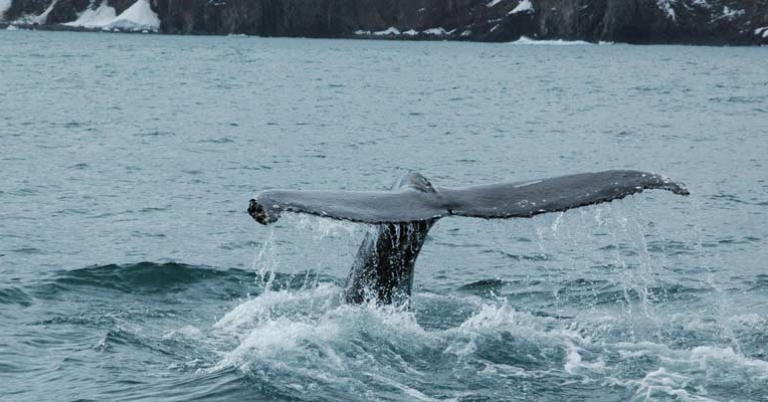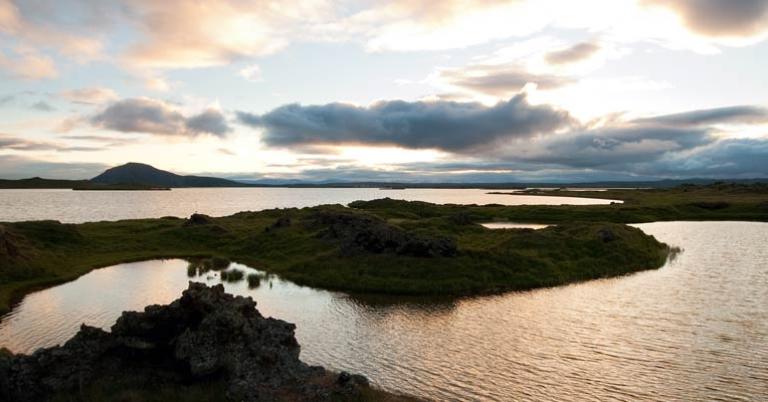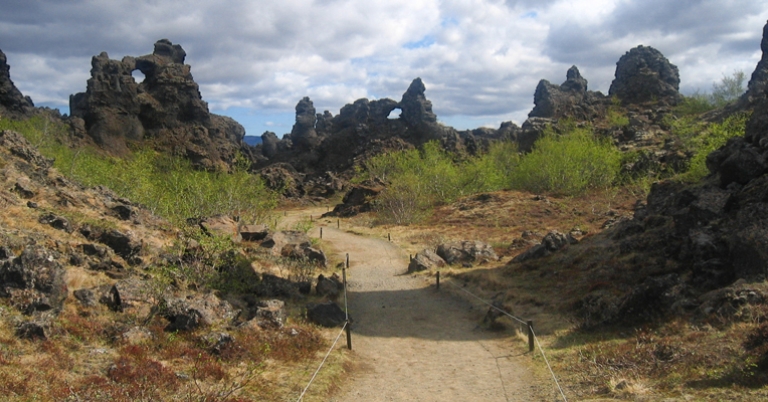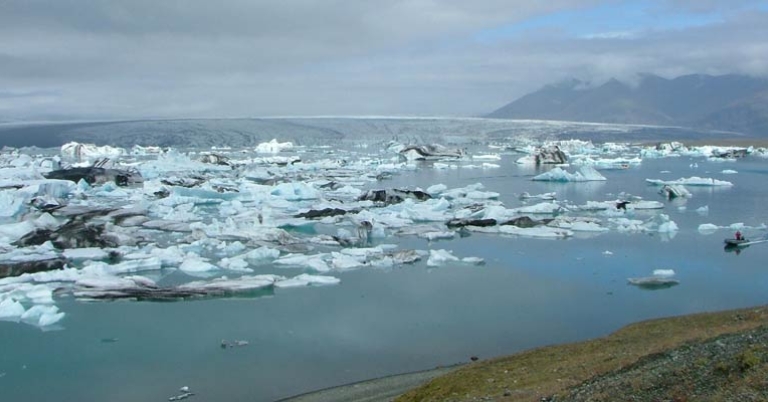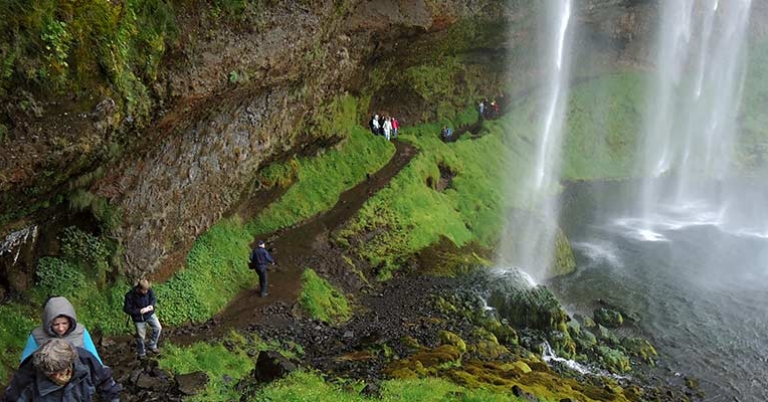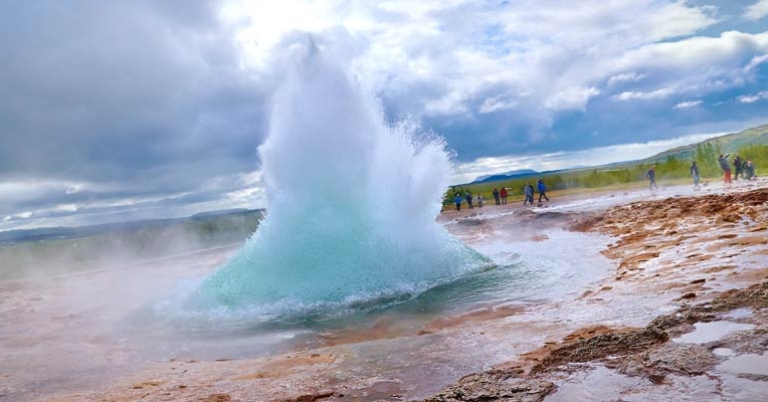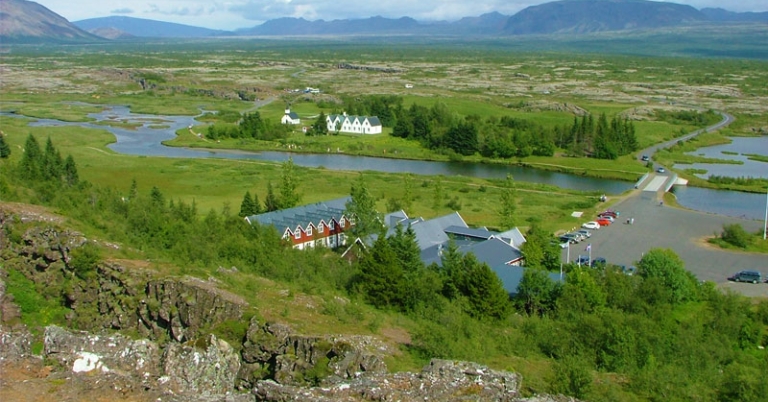Iceland | Journey Through the Icelandic Countryside
Duration:
Interests:
About this trip
Shaped over millions of years by powerful geological forces, the Icelandic countryside is marked by waterfalls, glaciers, volcanoes, craters, fjords, and hot springs. Experience the full breadth of Iceland's beauty on this 10-day, comprehensive circuit around the island. You'll see many of the classic natural landmarks, including the sights of the Golden Circle, as well as more off-the-beaten-path gems. Along the way, learn about Iceland's history and folklore, tour the modern capital of Reykjavík, and spend time in picturesque villages and uninhabited highlands.
Highlights
- Take a rejuvenating soak in the alkaline, mineral-rich, geothermal waters of Mývatn Nature Baths.
- Look for humpback and minke whales, harbor porpoises, and dolphins during a whale watching excursion in Eyjafjörður, Iceland’s longest fjord.
- Stroll through the mysterious, labyrinthine lava fields of Dimmuborgir, whose name translates to "Dark Castles."
- Marvel at Dettifoss, Europe's most powerful waterfall.
What makes us different
Service anytime
Cultural Discovery
Sustainable travel
Custom-tailored trips
Low stress travel planning
Flight arrangements
Daily Itinerary
Print ItineraryDepart US
Day 1Reykjavík
Day 2Laugarbakki
Day 3Húsavík
Day 4Lake Mývatn
Day 5Fljótsdalshérað
Day 6Vatnajökull National Park
Day 7Hveragerði
Day 8Reykjavik
Day 9Departure
Day 10Pricing
Print PricingPlease call 800-451-7111 for your price.
What's Included
What's Not Included
Travel Info
Print Travel InfoEntry & Exit Requirements
U.S. and Canadian citizens must have a passport valid at least three months beyond your planned date of departure from Iceland. As this requirement is subject to change without notice, we recommend at least six months' validity.
A visa is not required for visits up to 90 days.
If you are not traveling with a U.S. passport, please check with the Icelandic Embassy for the requirements based on your nationality.
Health Information
IMMUNIZATIONS
The Centers for Disease Control recommends that all travelers be up to date on routine vaccinations such as measles-mumps-rubella (MMR) vaccine, diphtheria-pertussis-tetanus vaccine, varicella (chicken pox) vaccine, and your yearly flu shot before every trip.
There are no vaccinations required for entry into Iceland.
Some physicians recommend that travelers get a hepatitis A vaccine before visiting Iceland.
Please consult your physician for additional information and recommendations based on your individual circumstances.
FROSTBITE
Frostbite is damage to the skin from freezing and is due to prolonged exposure to cold temperatures. Symptoms include patches of reddened skin that become white, hard, and swollen; or skin that burns, tingles, or is numb or painful. Severe cases can result in blisters or ulcers forming and may involve deeper tissues. The most common sites for frostbite are the fingers, hands, toes, feet, ears, nose, and cheeks.
To avoid frostbite, dress warmly and in layers but avoid tight clothing as it may reduce circulation. Keep the face and extremities covered. Avoid overheating and excessive perspiration. Change wet clothing, especially socks and gloves.
HYPOTHERMIA
Hypothermia is life threatening. It is caused by cold, wet, or windy weather that causes the body to lose heat faster than it can produce heat. Hypothermia can occur in rugged mountain terrain where the weather can change extremely fast, or after being soaked in a stream crossing or a boating accident since most Alaskan waters are very cold all year long.
Symptoms include feeling cold, uncontrollable shivering, clumsiness due to loss of muscle coordination, slurred speech, inability to think clearly, and eventual unconsciousness and cessation of reflexes including heart and lung functions. Many victims in the later stages of hypothermia feel warm and try to shed clothing.
To treat hypothermia, first warm the core of the body before the extremities. Remove any wet clothing. Re-warm the victim slowly; do not warm fast by immersing in warm/hot water. Provide shelter out of the weather. Warm drinks are not necessary, but may help in the psychological recovery. Do NOT give alcohol. Try to keep victim awake as this helps keep the body temperature up.
SUN EXPOSURE
Despite cold temperatures, the effects of the sun can be damaging to the eyes and skin. Spending time outdoors exposes you to the sun’s harmful ultraviolet (UV) rays, even on cloudy days. To protect yourself from the sun, use a broad spectrum sunscreen of at least SPF 15, protect skin with clothing, wear a wide-brimmed hat and sunglasses, and drink plenty of fluids.
Resources
Print ResourcesSuggested Packing List
To help you get ready for your expedition, below is a suggested packing list.
You may find many of the items below in the New Headings Gear Store. Use code HolbrookGuest10 for a 10% discount on your purchase.
DRESS FOR THE WEATHER
During summer, the weather in Iceland will be more like early spring or late fall. There may be warm days, but also expect cold, rain, mist, and fog. Pack clothes that you can use to dress in layers,
- T-shirts
- Long sleeve shirts
- Sweat shirts
- Wool sweaters
- Warm jacket or ski parka
- Warm hat
- Gloves
- Wool socks
- Wet weather gear
FOOTWEAR
Good, strong footwear is essential. While most people think that joggers or sports shoes are the best, they provide little to no ankle protection and are not strong enough to cope with sharp, rough terrains. Leather hiking boots are ideal.
MISCELLANEOUS
- Sun protection – You can get sunburned in Iceland, so bring a hat and sun screen
- Water bottle – Carry at least a liter into the field with you each day
- Snacks – Salted nuts, trail mix, fruit, candy, etc.
- Swimsuits
- Day backpack
- Camera
- Medications
- Mosquito repellant
In addition to your toiletries, it is useful to pack a small medical kit, which you can easily prepare and carry in your day pack. Helpful items include bandages, mosquito repellant wipes, antihistamine, a pain-reliever, individually-wrapped moist wipes, anti-diarrhea medicine, anti-fungal cream, antibiotic ointment, and an extra pair of disposable contact lenses or eyeglasses if you wear them.

